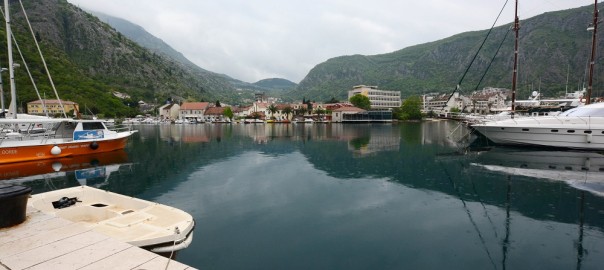Highlights
Die Republik Slowenien liegt an der nordöstlichen Ecke der Adria, und grenzt im Westen an Italien, im Norden an Österreich und Ungarn, und im Süden an Kroatien an. Slowenien hatte während seiner Geschichte keine Küste, und erwarb eine kurze Küstenstrecke erst 1954, wenn die Umgebung von Triest an Italien angeschlossen wurde, und die 11 Meilen lange Küstenstrecke von der Grenze bis zu Portoroz der slowenischen Nation überlassen wurde. Durch diese Gebietsübertragung erwarb Slowenien vier wichtige Häfen, wo heute Yachts anschiffen können. Diese sind vom Norden nach Süden: Koper, Izola, Piran und Portoroz. Diese Hafenstädte wurden – bis auf Portoroz, die ein moderner Urlaubsort ist – an Stellen von früheren venezianischen Siedlungen gebaut, und haben bis zu heute ihre malerischen Altstädte erhalten. Von diesen Häfen aus kann man die zahlreichen touristischen Attraktionen von Slowenien entdecken, z.B. den Nationalpark Triglav National Park in den Julischen Alpen; das berühmte Gestüt Lipica in Lipica; die wunderschönen Höhlensysteme von Postojna und Skocjan; die von Touristen gern fotografierten Seen Bled und Bohinj und viele Schlösser in romantischer Umgebung, wie z. B. Schloss Predjama und Bled.
Wann sollte man Slowenien besuchen?
Welche Orte sollte man besuchen? – die wichtigsten Yachthäfen
Yachts, die aus Kroatien ankommen, müssen sich in Piran anmelden, bevor sie in andere Häfen weiter schiffen dürften.
Koper
Die Stadt Koper liegt an der slowenischen Küste, 3 Meilen südlich von der italienischen Grenze und 4 Meilen östlich vom Hafen Izola. Koper ist der einzige Handelshafen von Slowenien und der nördlichst gelegene Hafen an der kurzen slowenischen Küste. Die uralte Siedlung von Koper war ursprünglich auf einer Insel gebaut, gehörte von 1232 an zu der Republik Venedig, und wurde im 15. Jahrhundert zur Hauptstadt der Provinz Istrien. Die Stadt Koper verlor an Macht, als ihr italienischer Nachbar, Triest, im Jahre 1719 zu freier Hafenstadt wurde, und dadurch an Einfluss gewann. Die Mehrheit der italienischen Einwohner hat Koper 1954 verlassen, als die Stadt der neuen Föderativen Volksrepublik Jugoslawien überlassen wurde. Koper gewann erst 1991 wieder an Einfluss, als die Unabhängigkeit von Slowenien erklärt wurde, und die Stadt zum einzigen Handelshafen des unabhängigen Landes wurde. Koper hat eine charmante Altstadt und einen kleinen Yachthafen (Marina Koper), der 75 Liegeplätze für maximal 18 m lange Yachts und eine kleine Schiffswerft mit Winterlager für ca. 25 Yachts bietet.
Beim ruhigen Wetter kann man eine halbe Meile südwestlich von dem Yachthafen verankern, wo es sich eine geschützte, kleine Bucht befindet (südlich von dem langen Wellenbrecher des alten Hafens). Man kann in 4.0 – 5.0 Meter tiefem Wasser verankern, fern von den Betonklötzen. Am schlammigen Boden ist das Schiff sicher verankert.
Es macht Spaß, die Altstadt von Koper mit ihren engen Gassen und malerischen Häusern zu entdecken. Nennenswerte Gebäude in Koper: Prätoren-Palast, gebaut in einem Gemisch von venezianischem und gotischem Stil, heute Stadthaus; Loggia Palast, ursprünglich gebaut im Jahre 1462; Glockenturm, in den man auf 204 Treppen hinaufgehen und von da oben eine fantastische Aussicht auf die Stadt und den Hafen genießen kann.
Izola
Die Stadt Izola liegt an der slowenischen Küste, 4 Meilen südlich von der italienischen Grenze und 3 Meilen westlich vom Hafen Koper. Izola, wie auch Koper, war ursprünglich auf einer Insel gebaut, und gehörte von 1267 an zu der Republik Venedig. Die venezianische Herrschaft dauerte bis 1797, als die Truppen von Napoleon angekommen sind. Danach wurde die Schutzmauer der Stadt vernichtet, und die Insel mit dem Festland verbunden. Dann folgte die österreichische Herrschaft, die bis 1918 dauerte. Dann wurde die Stadt zum Teil des italienischen Königreiches. Wie auch in anderen Städten an der slowenischen Küste, hat die Mehrheit der italienischen Einwohner Izola 1954 verlassen, als die Stadt der neuen Föderativen Volksrepublik Jugoslawien überlassen wurde. Izola ist heute ein sich schnell entwickelndes touristisches Zentrum, und verfügt über den gröβten Yachthafen in Slowenien, der 700 Liegeplätze für maximal 30 m lange Yachts und eine kleine Schiffswerft mit Winterlager für ca. 50 Yachts bietet.
Der Eingang in den Yachthafen ist ein 75 Meter breiter Kanal (im West-Südwesten) zwischen zwei langen Wellenbrechern. Im östlichen Teil des Hafens befinden sich Betonklötze und Schwimmstege für kleine Schiffe; im westlichen Teil Schwimmstege für gröβere Schiffe. Der Yachthafen ist gut geschützt, aber starke Nordwinde können bei den äuβersten Liegeplätzen starke Wellen verursachen.
Auch in der Altstadt von Izola befinden sich enge Gassen und malerische Häuser, aber sie ist alles in allem weniger charmant, als die Altstädte von Koper oder Piran. Nennenswerte Gebäude in Izola: St. Maurus Kirche aus dem 16. Jahrhundert, von deren separatem Glockenturm das Stadtbild geprägt ist; Besenghi degli Ughi Palast aus dem 18. Jahrhundert; Manzioli Palast (am gleichnamigen Platz) aus dem 15. Jahrhundert. In der Stadt befindet sich das Parenzana Museum, in dem man eine der gröβten Kollektionen der Welt von Schiff- und Eisenbahnmodellen besichtigen kann. Izola bietet auch einen guten Ausgangspunkt zum Entdecken des Festlandes von Slowenien. Von hier aus kann man Ausflüge machen, und das berühmte Gestüt Lipica in Lipica, die wunderschönen Höhlensysteme von Postojna und Skocjan bzw. den Schloss Predjama aufsuchen.
Piran
Die Stadt Piran liegt auf der Spitze einer kleinen Halbinsel an der slowenischen Küste, ein bisschen mehr als 4 Meilen west-südwestlich vom Hafen Izola und 3 Meilen nördlich von der kroatischen Grenze. Piran mit seinen schön erhaltenen mittelalterlichen Gebäuden, Straβen, Plätzen und der hohen Stadtmauer – die die Stadt vom Festland trennt – ist ein architektonisches Schmuckstück von Slowenien. Die meisten Gebäude stammen aus dem Zeitalter der venezianischen Herrschaft und der Österreichisch-Ungarischen Monarchie. Die ursprünglichen Festungen der Stadt stammen aus dem byzantinischen Zeitalter. Die bis heute erhaltenen Mauern und vier Türme wurden im 16. Jahrhundert errichtet, als sich die alten Mauern infolge der Verbreitung der Kanonen als zu schwach erwiesen. Viele alte, im 13. Jahrhundert errichtete Stadttore stehen auch noch heute in den engen Gassen. Einer der berühmtesten Söhne der Stadt ist der Violinist und Komponist Giuseppe Tartini, dessen Statue noch auch heute auf dem nach ihm genannten Hauptplatz der Stadt steht.
Der kleine Hafen bietet entlang seinem westlichen Wellenbrecher ca. 20-30 Liegeplätze in 5.0 – 6.0 Meter tiefem Wasser für maximal 20 m lange Yachts. Der Hafen hat beim ruhigen Wetter die meisten Gästeschiffe.
Der Hafen liegt am südöstlichen Teil der Halbinsel, der Eingang öffnet sich vom Süd-Südwesten. Der Eingang in den Hafen ist eng, und man muss aufpassen, wenn gröβere Schiffe den Hafen verlassen. Der Hafen ist im Allgemeinen gut geschützt, aber starke Nordwestwinde können gefährliche Wellen verursachen. In diesem Fall empfiehlt sich die 2 Meilen südöstlich gelegene Marina Portoroz, wo man beim starken Wind sicherer anlegen kann.
Yachts, die aus Kroatien ankommen, müssen sich in Piran anmelden, bevor sie nach Norden weiter schiffen dürften – und vice versa. Gästeschiffe legen im Allgemeinen mit dem Bug oder Heck entlang dem westlichen Wellenbrecher an, wo es ca. 20-30 Liegeplätze in 5.0 – 6.0 Meter tiefem Wasser für maximal 20 m lange Yachts gibt. Die Liegeplätze an der östlichen Seite des Hafens sind für lokale Yachts aufbehalten.
Es gibt nicht wirklich geschützte Ankerplätze hier, aber es ist möglich, beim ruhigen Wetter in der von Marina Portoroz direkt nördlich gelegenen Bucht zu ankern.
Es macht Spaβ, Piran zu entdecken, weil man fast an jeder einzelnen Ecke auf neue Sehenswürdigkeiten stolpert. Der Hauptplatz Tartinijev Trg war einst das innere Becken des Hafens, das 1894 aufgefüllt wurde, und an dessen Stelle dann der Hauptplatz errichtet wurde.
Die Statue des berühmtesten Sohnes der Stadt, des Violinisten und Komponisten Giuseppe Tartini steht auf dem Hauptplatz. An der nördlichen Seite des Platzes steht ein rot bemaltes Haus. Es gehört zu den ältesten Gebäuden von Piran, und wurde der Legende nach von einem wohlhabenden venezianischen Kaufmann für seine Liebhaberin gebaut (deshalb ist an der Wand des Hauses die Aufschrift „Lassa pur dir” – „Sie sollen klatschen, wenn sie wollen” zu lesen).
Von der St. George Kirche auf dem Hügel über der Stadt öffnet sich eine fantastische Aussicht, und wenn man in den Glockenturm hinaufgeht, kann man eine noch schönere Aussicht genieβen. Die berühmtesten Aussichtspunkte sind aber die Türme der im 16. Jahrhundert errichteten Stadtmauer, die am östlichen Ende der Stadt stehen. Von da an kann man die Stadt mit ihren alten Dächern bewundern, und beim klaren Wetter sieht man sogar die 12 Meilen nordwestlich gelegene Grado-Halbinsel an der italienischen Küste.
Portoroz
Der Urlaubsort Portoroz liegt an der slowenischen Küste, ein bisschen mehr als 2 Meilen südöstlich vom kleinen Hafen Piran und 2 Meilen nördlich von der kroatischen Grenze. Portoroz ist der einzige Massenurlaubsort in Slowenien, dessen Stadtbild von modernen, hohen Hotels und Casinos geprägt ist. Die Stadt ist zwar angenehm, aber viel weniger charmant, als die alten venezianischen Häfen Piran, Koper oder sogar Izola. Portoroz bietet aber einen guten Ausgangspunkt zum Überwintern oder Entdecken des Festlandes von Slowenien. Die groβe Marina Portoroz befindet sich südlich von dem Urlaubsort, und bietet ca. 650 Liegeplätze für maximal 30 m lange Yachts mit einem maximalen Tiefgang von 3,5 Meter.
Yachts müssen sich zuerst in Piran anmelden, bevor sie nach Portoroz weiter schiffen dürften. Für Details über die Liegeplätze siehe Eintrag Marina Portoroz. In der Marina können maximal 30 m lange Yachts mit einem maximalen Tiefgang von 3,5 Meter anlegen.
Es gibt nicht wirklich geschützte Ankerplätze hier, aber es ist möglich, beim ruhigen Wetter in der von der Marina direkt nördlich gelegenen Bucht zu ankern.
Portoroz ist ein Urlaubsort, und hat wenige Sehenswürdigkeiten. In Portoroz kann man vor allem auf dem Strand liegen oder ins Heilbad gehen. Portoroz bietet aber einen guten Ausgangspunkt zum Entdecken des Festlandes von Slowenien. Von hier aus kann man Ausflüge machen, und das berühmte Gestüt Lipica in Lipica, die wunderschönen Höhlensysteme von Postojna und Skocjan bzw. den Schloss Predjama aufsuchen. Von Portoroz aus erreicht man mit dem Bus die charmante mittelalterliche Stadt Piran schnell, die man unbedingt sehen muss.
Nützliche Informationen
Für EU-Bürger und EU-Schiffe gelten keine administrativen Formalitäten, wenn sie aus einem EU-Hafen in Slowenien ankommen. Wenn sich auch Nicht-EU-Bürger auf dem Schiff aufhalten, muss man mit der Einwanderungsbehörde in Kontakt treten. Nicht-EU-Bürger müssen sich innerhalb von 3 Tagen nach ihrer Ankunft bei der Polizei anmelden. Das Zollamt muss auch benachrichtigt werden, ob es etwas (z.B. Feuerwaffen) zu verzollen gibt. Wenn man aus einem Nicht-EU-Hafen kommt, muss man innerhalb der 12-Meilen-Grenze die Q Flagge aufziehen. Man muss mit dem Zollamt und der Einwanderungsbehörde den Kontakt aufnehmen. Das Zollamt und die Einwanderungsbehörde sind auch in dem Fall zu benachrichtigen, wenn man in einen Nicht-EU-Hafen weiter schifft.
Ein Schiff, das im Eigentum eines EU-Bürgers ist, hat das Recht auf freie Bewegung innerhalb der EU, vorausgesetzt, dass die MWSt. nach dem Schiff in einem EU-Land bezahlt wurde. In den EU-Ländern gibt es keine gesetzlich vorgeschriebene Frist für die in der EU registrierten Schiffe, nach denen die MWSt. bezahlt wurde, trotzdem kann es vorkommen, dass einige Länder lokale Regelungen anwenden, nachdem ein Schiff 6 Monate in dem jeweiligen Land verbracht hatte. Ein Schiff, das im Eigentum eines Nicht-EU-Bürgers ist und auβerhalb der EU registriert wurde, ist in Slowenien zu einer steuerfreien vorübergehenden Einfuhr für einen totalen Zeitraum von 18 Monaten berechtigt. Der erlaubte Aufenthaltszeitraum bezieht sich auf den gesamten EU-Raum, deshalb muss man nach dem Ablauf dieses Zeitraums in ein Nicht-EU-Land weiterschiffen oder MWSt. bezahlen. Der Zeitraum der vorübergehenden Einfuhr kann nach Ortsgebrauch verlängert werden – im Falle von in gutem Glauben anzunehmenden Gründen, z. B.: man lässt das Schiff unaufbesichtigt und auβer Betrieb, der Eigentümer verlasst den EU-Raum, der Eigentümer lässt das Schiff in einer Schiffswerft zum Reparieren. Wenn man länger in Slowenien bleiben will, muss man die Dokumente des Schiffes beim lokalen Zollamt hinterlegen, und das Zollamt nimmt das Schiff in Pfand. Die Gültigkeit des Pfandrechtes beginnt, als der Eigentümer auf dem Schiff zurückkehrt. Während der Gültigkeit des Pfandrechtes darf das Schiff den Liegeplatz nicht verlassen, und der Eigentümer bzw. die Crew dürfen nicht auf dem Bord schlafen.
Wichtig: Haustiere werden nach Slowenien eingelassen nur in dem Fall, wenn sie mit einem Microchip gekennzeichnet sind und für sie ein sogenannter „Pet Passport” ausgestellt ist.
Visa
Nicht-EU-Bürger und EU-Bürger aus Ländern auβerhalb des Schengen-Gebiets brauchen neben dem gültigen Reisepass auch ein Visum, um in die Republik Slowenien einreisen zu dürfen. EU-Bürger brauchen in den ersten drei Monaten nach ihrer Einreise in die Republik Slowenien keine Aufenthaltsgenehmigung. Nach dem Ablauf der drei Monate müssen sie aber eine Aufenthaltsgenehmigung beantragen.
Um ein Visum einzuholen, braucht man folgende Dokumente: – gültiger Reisepass und eine Kopie der Seite mit den persönlichen Daten und anderer relevanten Seiten (Visa, Ein- und Ausreisestempel, weitere Bemerkungen); – mindestens ein 45mm × 35mm, klares, unmontiertes Farbbild von guter Qualität, gedruckt auf normales Fotopapier; – Visagebühr (35 oder 60 EUR); – zusätzliche Unterlagen auf Anfrage.
Das Visumerteilungsverfahren dauert im Allgemeinen nur ein paar Tage, aber infolge der Überprüfung der Daten oder Unterlagen kann es auch länger dauern. Deshalb ist es nötig, das Visum rechtzeitig zu beantragen, also spätestens 4 Wochen vor der geplanten Ankunft. Das Visum kann man 6 Monaten lang benutzen, und es berechtigt zu einem Aufenthalt von 90 Tagen.
Wetter
Das Wetter in Slowenien, wie auch in der nördlichen Adria im Allgemeinen, ist durch bedeutsame saisonale Unterschiede gekennzeichnet. Bedingt durch die Geographie des Landes ist das Wetter durch drei verschiedene Klimaeinflüsse gekennzeichnet. In den Julischen Alpen herrscht im gröβten Teil des Jahres ein strenges Hochgebirgsklima, während man an der Küste ein wärmeres, submediterranes Klima genieβt. Das Landesinnere (nördlich und östlich von der Hauptstadt Ljubljana) hat eher ein Kontinentalklima. Durchschnittstemperaturen im Sommer: 20-24 C, im Winter: 0-4 C.
Tägliche Winde (im Allgemeinen Nordwestwinde) an der Küste sind im Sommer meistens gemäβigt, die Windstärke überschreitet nur selten den Wert von 4/5. An der nordöstlichen Küste der Adria wehen oft kalte (katabatische) Fallwinde in der Nacht. Anfang Frühling und besonders im Herbst kann das Wetter unruhiger sein, begleitet von starken – aber zum Glück kurzen – Gewittern und Winden mit einer Stärke von 30-35 kns oder mehr und starken, steilen Wellen. Im Winter muss man auf die schnell entstehende Bora, einen starken Nordwind aus den Bergen, zählen. Die Bora ist an der slowenischen Küste zwar nicht so stark wie in der Bucht von Triest, aber sie stellt eine echte Gefahr dar, wenn man auβerhalb der Saison segelt. Im schlechtesten Fall bläst die Bora zwei Wochen lang mit kleinen Unterbrechungen. Bora bedeutet im Allgemeinen stürmisches Wetter mit einer Windstärke von 100 kns oder mehr. In welche Richtung die Bora weht, ist zum gröβten Teil von der Lage der Küstenlinie beeinflusst. Die besondere Stärke der Bora kann durch den Ausgleich des Luftdruckunterschiedes zwischen der warmen Luft über dem Meeresspiegel und der kalten Luftschicht über den Bergketten an der Küste erklärt werden.
Im Winter weht auch der Schirokko oft – kann aber auch im Sommer vorkommen. Der Schirokko ist ein Süd-Südostwind, der aus Nord-Afrika in Richtung Mittelmeer weht. Im Vergleich zur Bora wird der Schirokko nur selten wirklich stark, trotzdem muss man auch auf den Schirokko achten, vor allem an einer luftgeschützten Küste. Im Sommer bläst der Schirokko im Allgemeinen für ein paar Tage, im Winter kann er sogar einige Wochen dauern. Die Vorzeichen des Schirokkos sind die Windstille am Meer, die schwachen Wechselwinde, der trübe Horizont, der Temperatur- und Feuchtigkeitsanstieg sowie der allmähliche Luftdruckabfall. Zum Glück weht der Schirokko im Allgemeinen in der südlichen Adria länger und stärker, als in der nördlichen Adria.

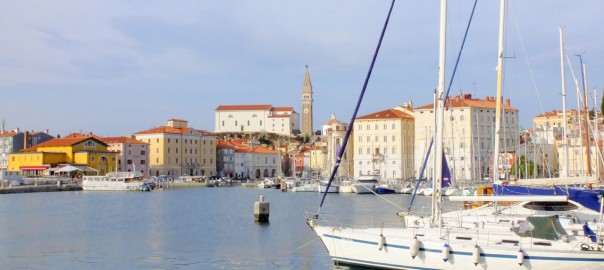

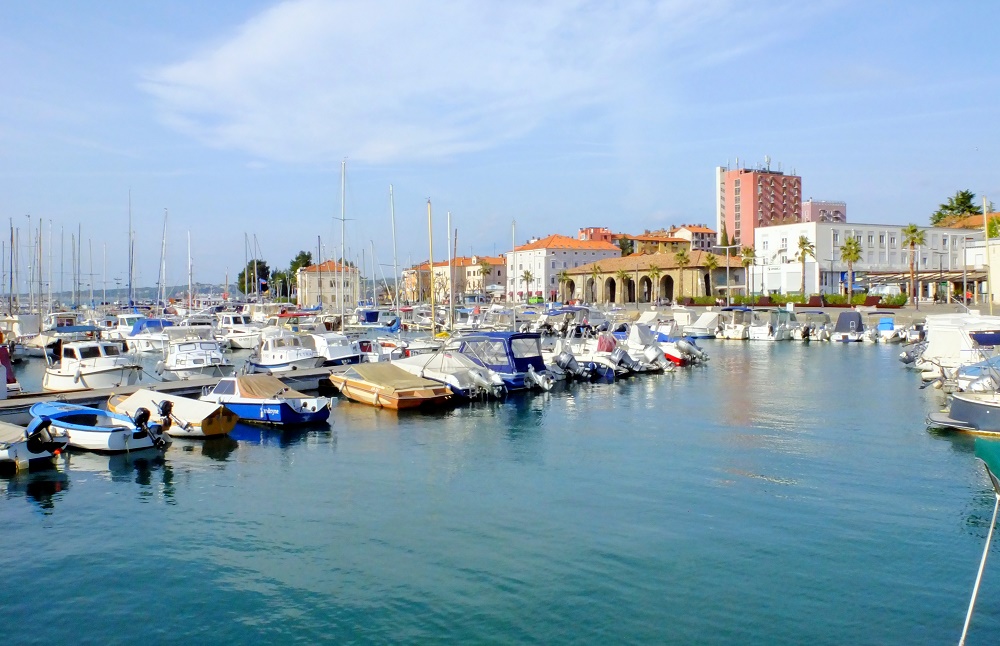
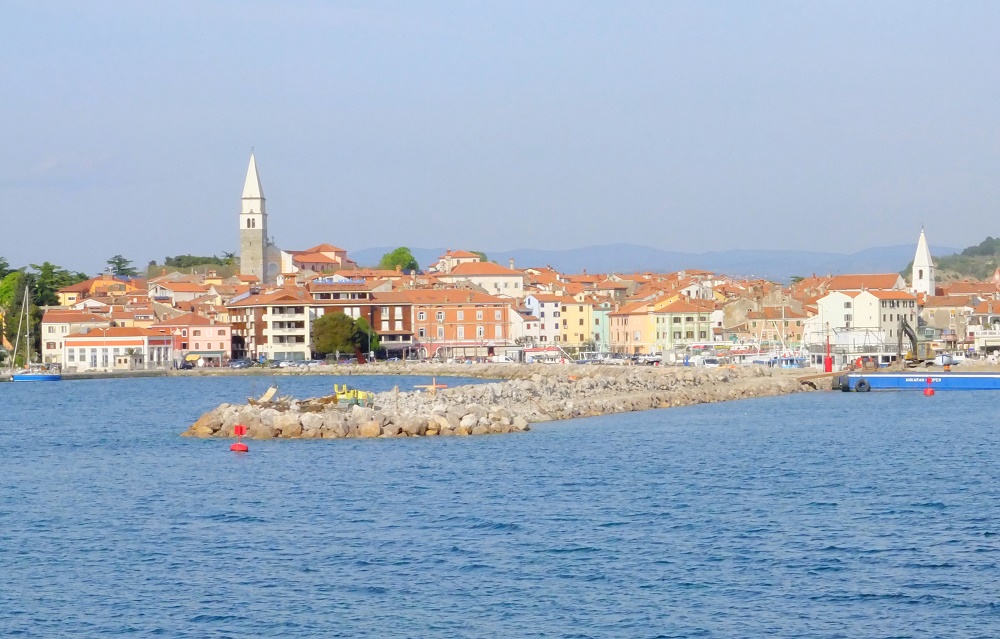
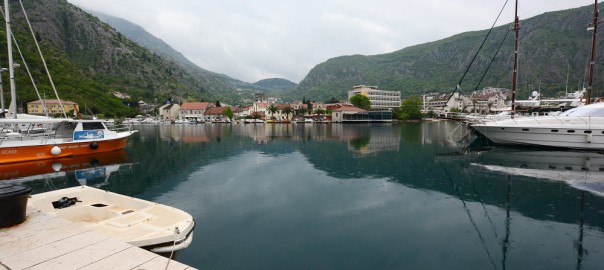
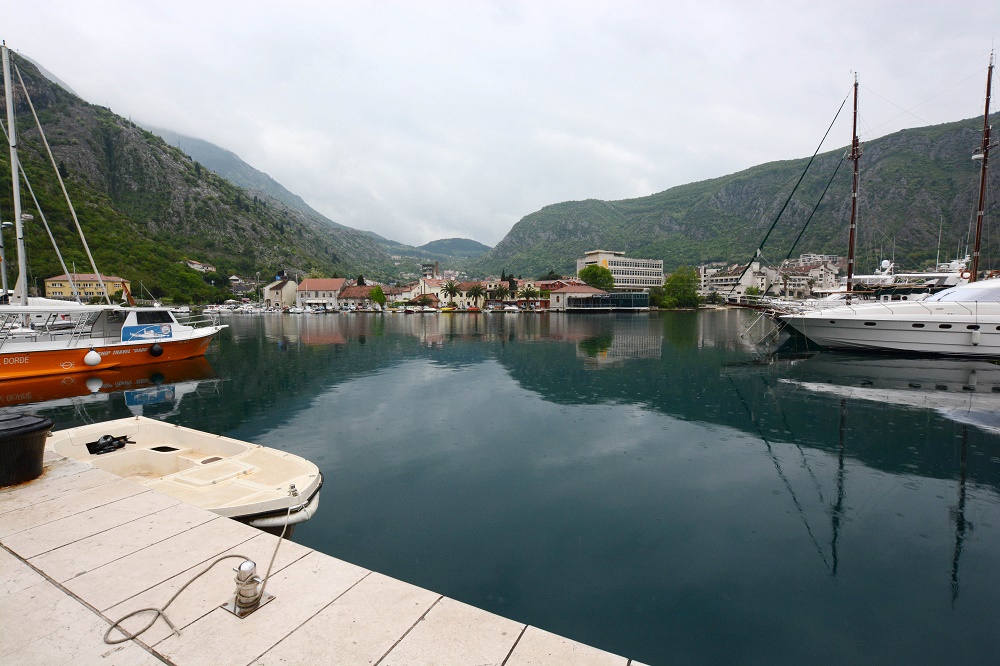
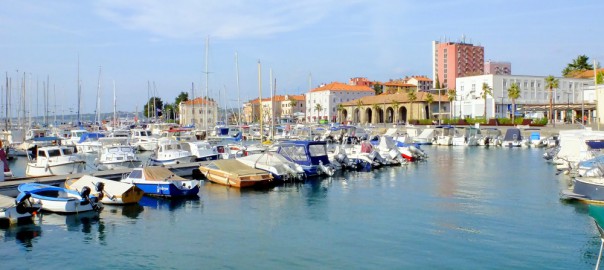

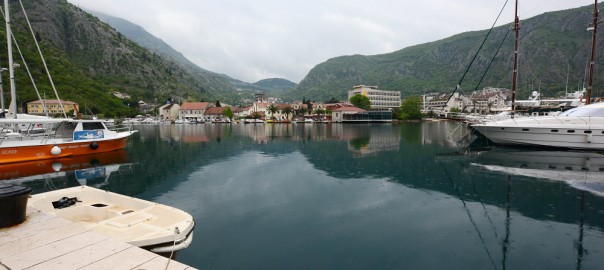
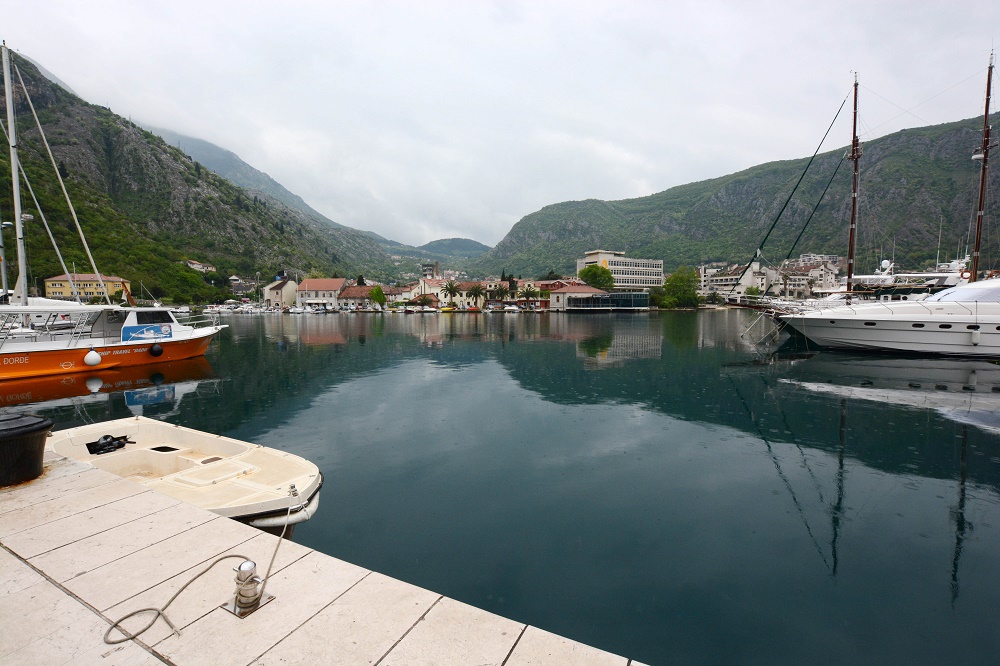
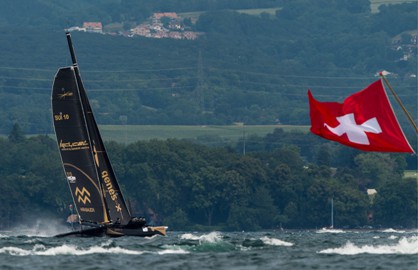





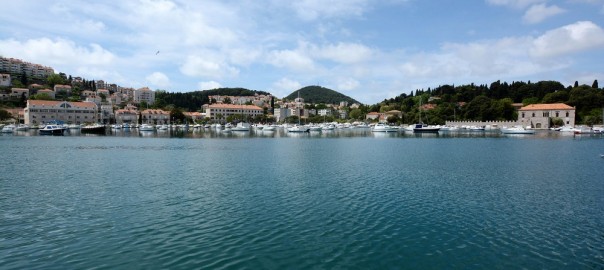

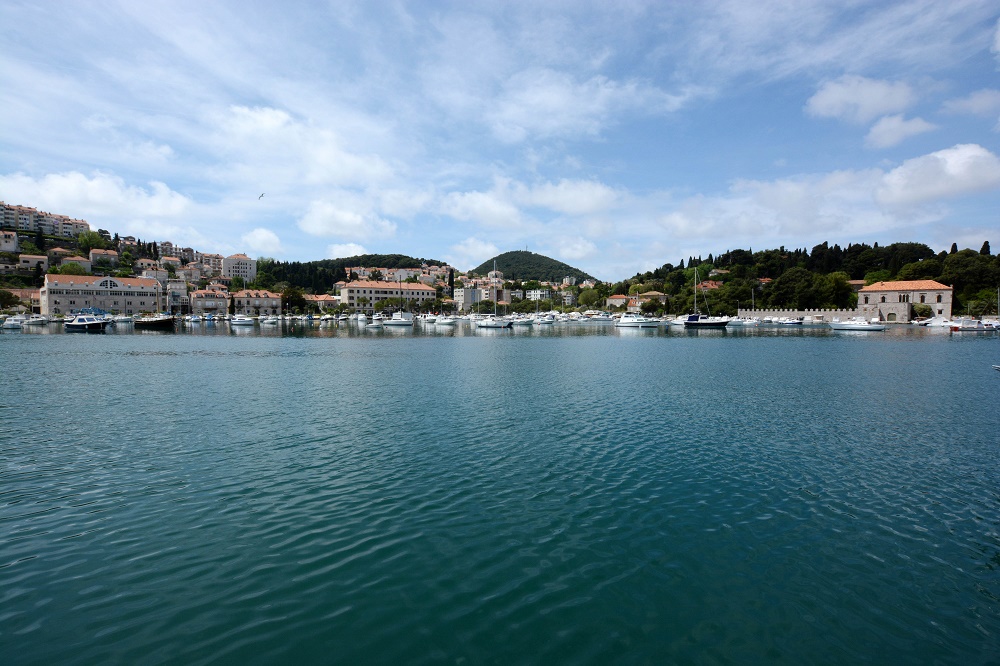
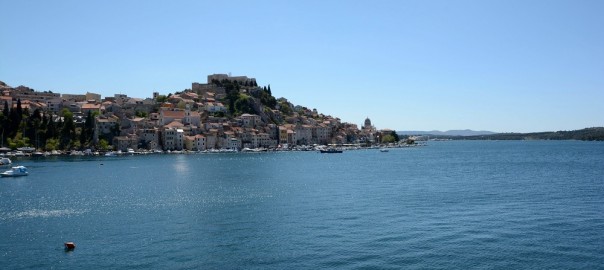
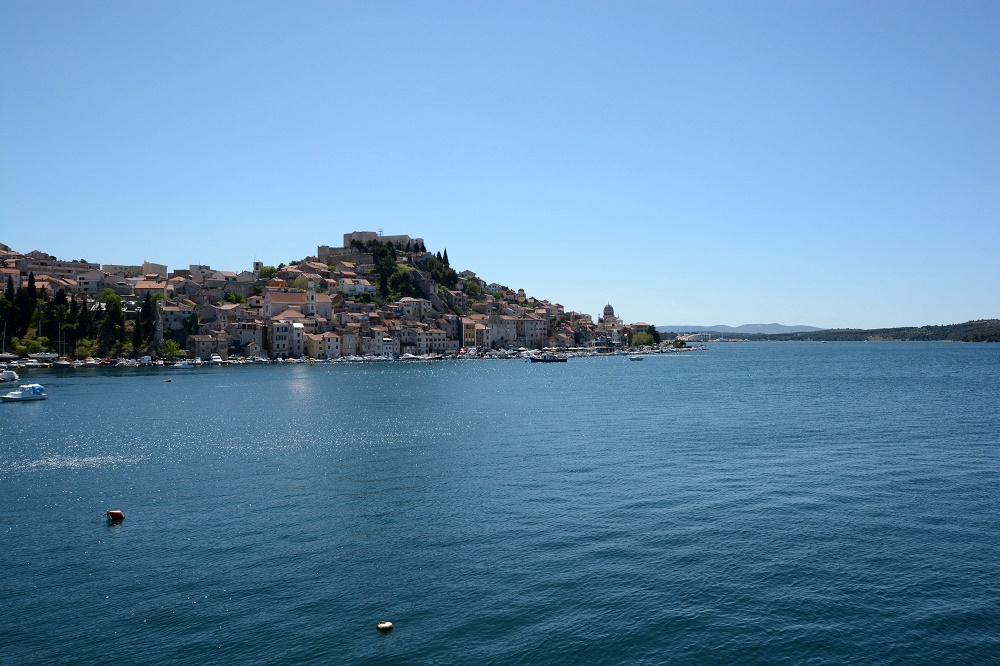
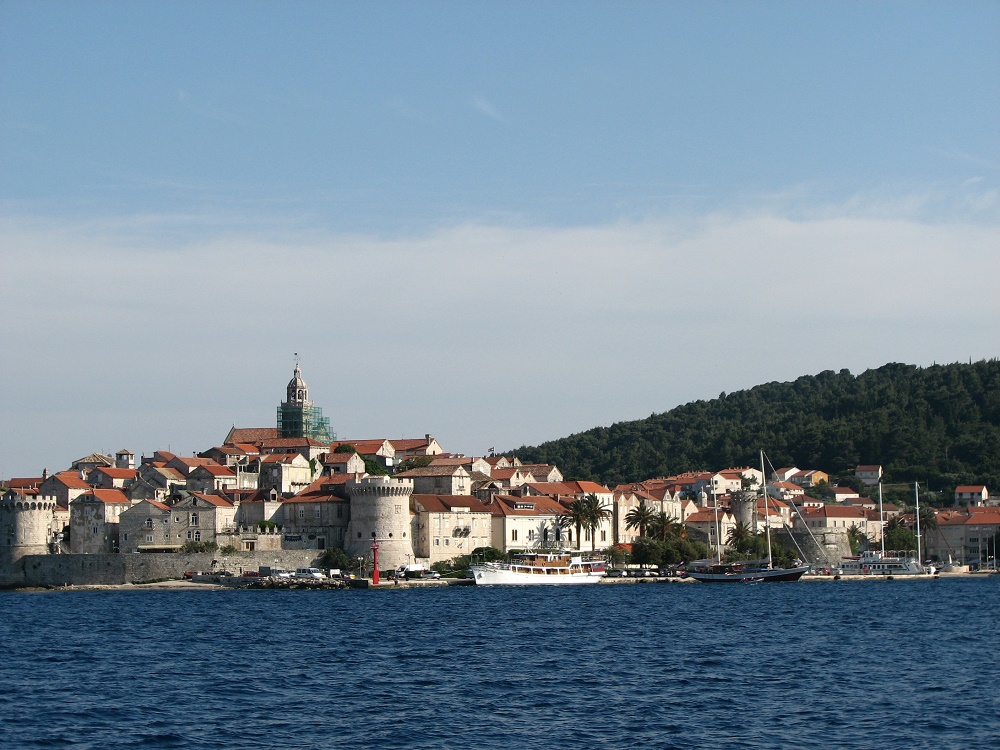
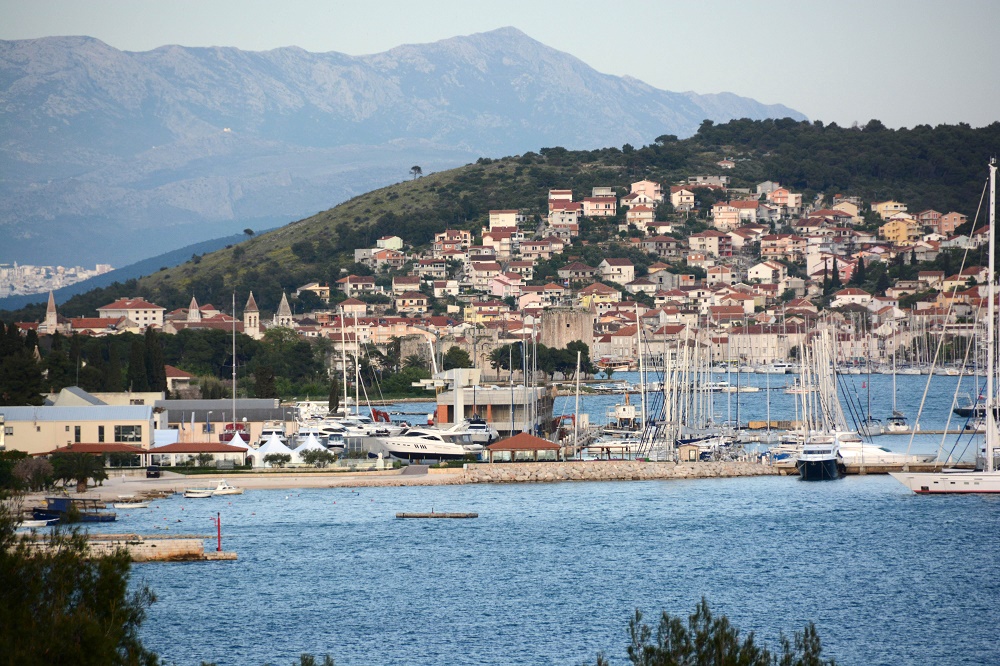
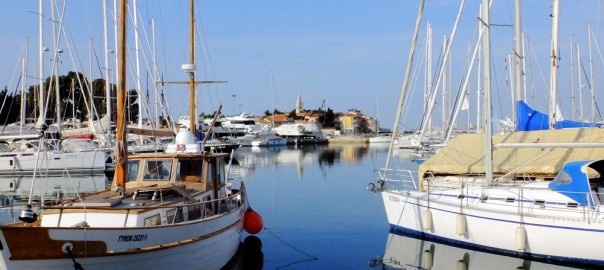
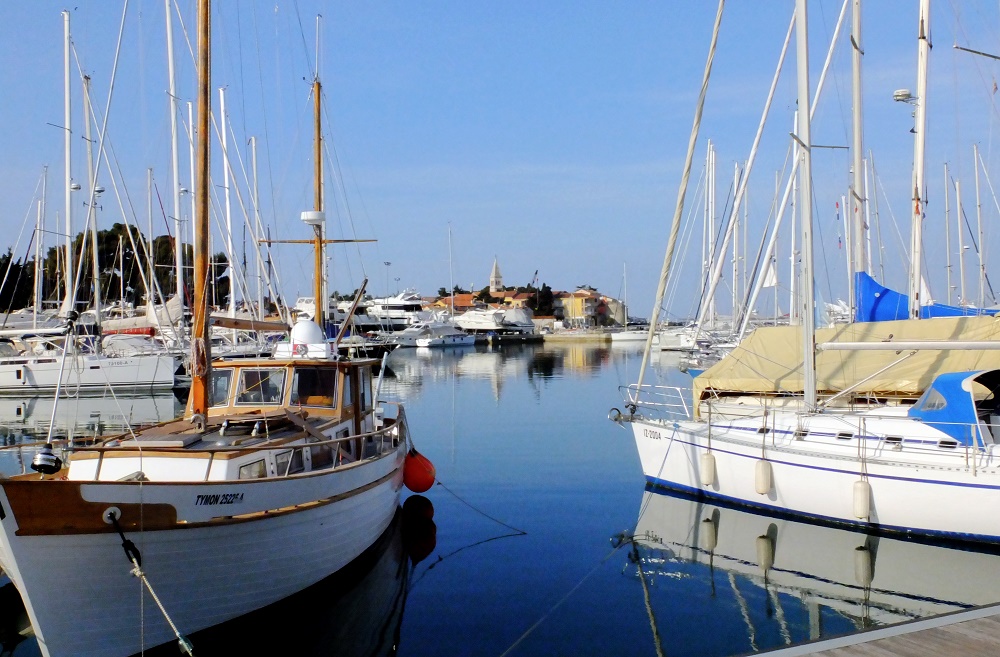
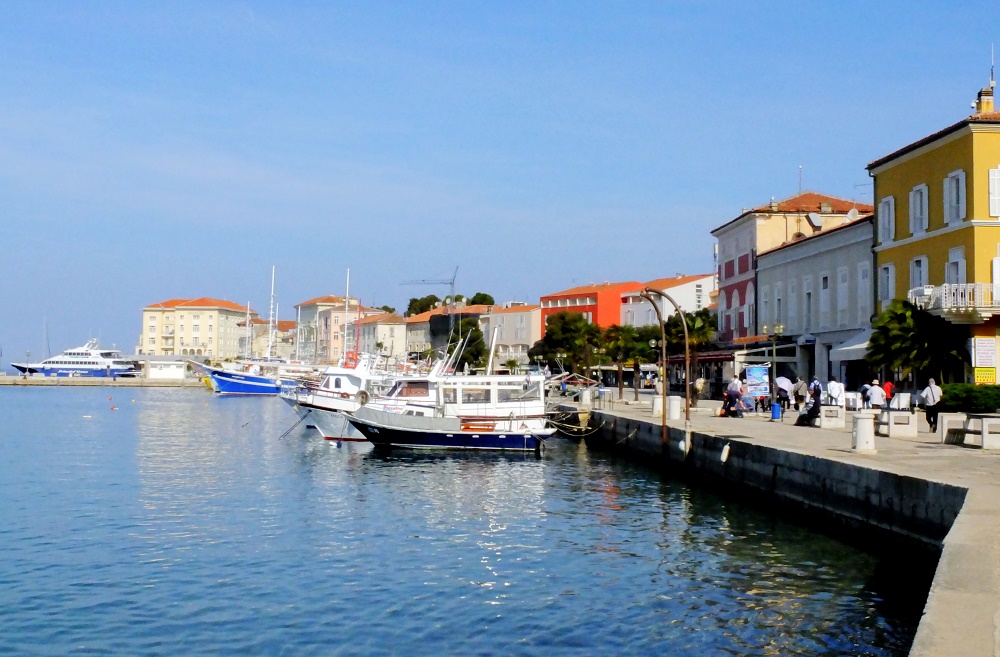
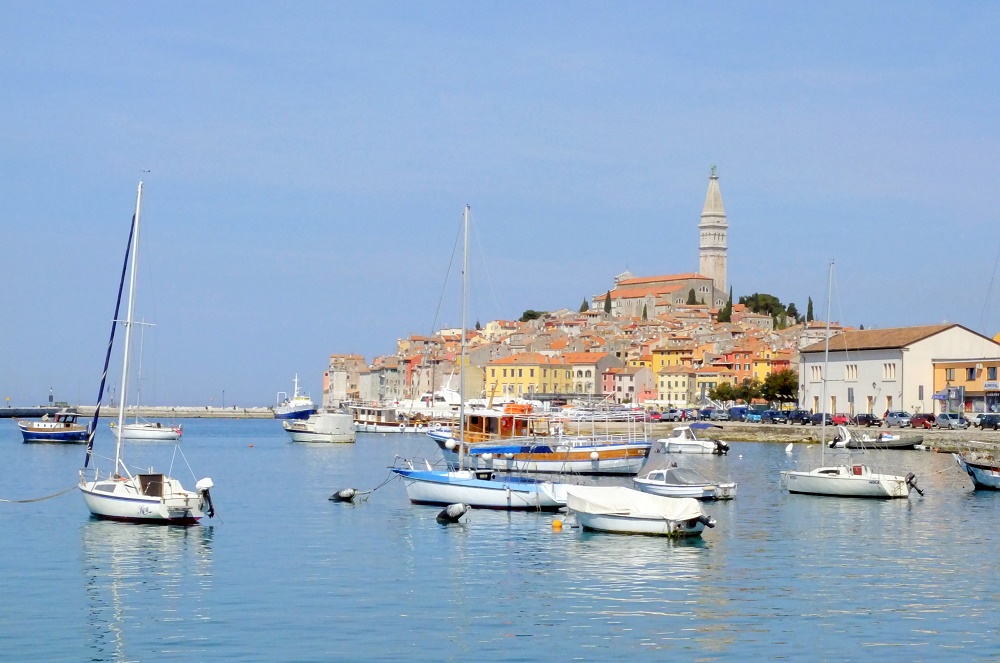
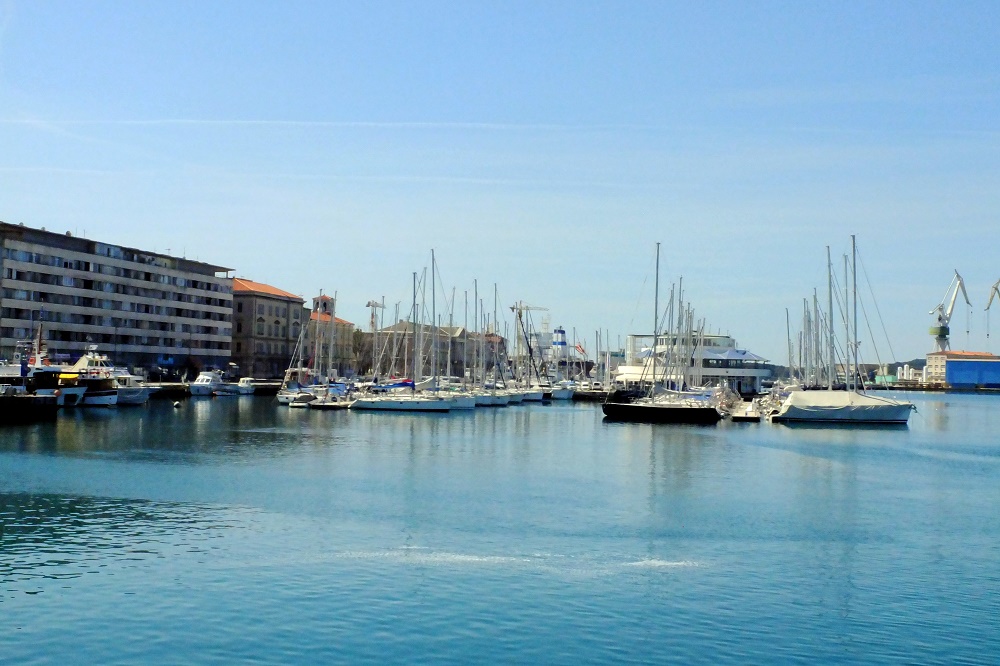
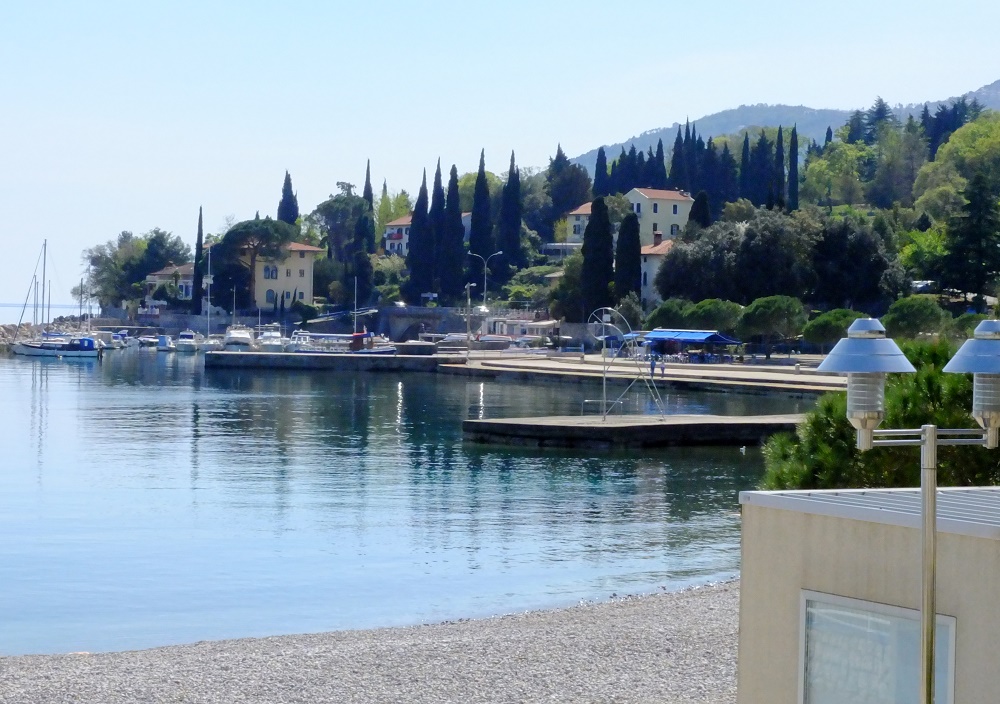
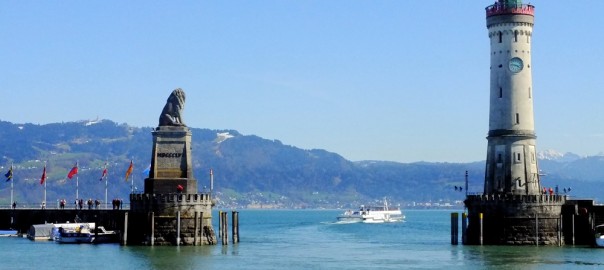
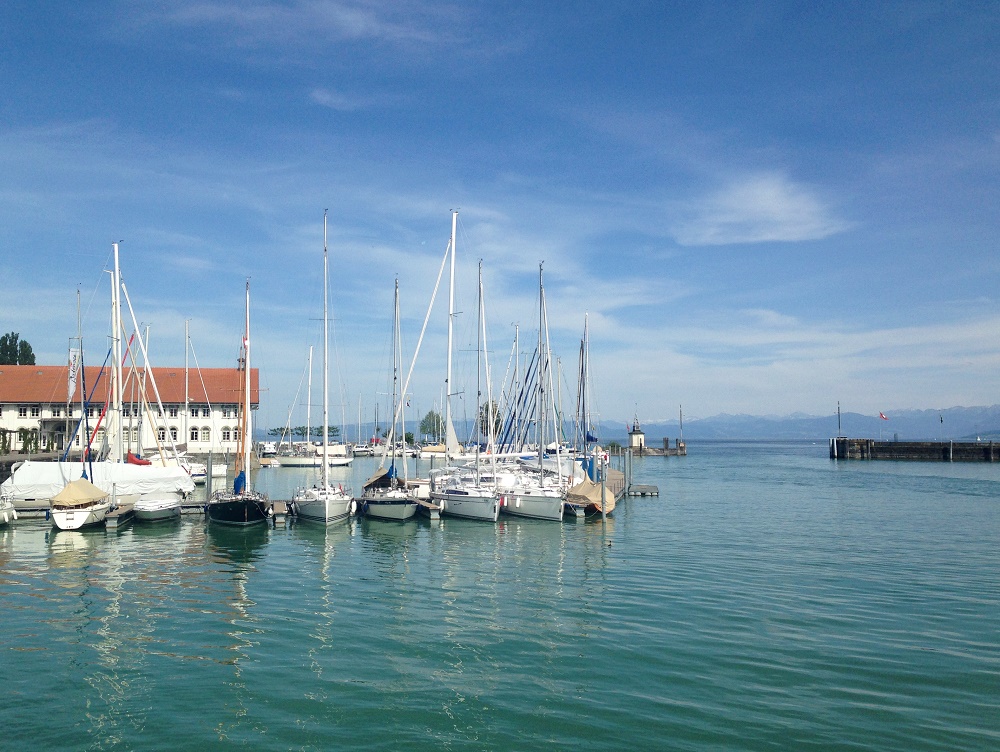 For the first time, in 1951 the Rund Um was a daytime race but due to favourable termic winds during the night, the organisers changed the schedule to a start at 19:30. Until 1984 the regatta was only for classic monohull designs, but since then boats from the Libera class can also file their entries which, since 2007 have to compete with high-tech multihull boats. In 2008 the Extreme 40 catamaran, Holmatro established a new race course record with 4 hours 41 minutes and 37 seconds. In this new era of multihull domination only once could a monohull beat the dominant class. It was in 2009, with very light wind conditions, when Raffica, an A-Class Libera helmed by Hungarian Zsolt Király defeated the catamarans with an elapsed time of 12 hours 2 minutes 41 seconds.
For the first time, in 1951 the Rund Um was a daytime race but due to favourable termic winds during the night, the organisers changed the schedule to a start at 19:30. Until 1984 the regatta was only for classic monohull designs, but since then boats from the Libera class can also file their entries which, since 2007 have to compete with high-tech multihull boats. In 2008 the Extreme 40 catamaran, Holmatro established a new race course record with 4 hours 41 minutes and 37 seconds. In this new era of multihull domination only once could a monohull beat the dominant class. It was in 2009, with very light wind conditions, when Raffica, an A-Class Libera helmed by Hungarian Zsolt Király defeated the catamarans with an elapsed time of 12 hours 2 minutes 41 seconds.